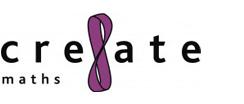Key Ideas - Chapter 4: Connecting measurement and decimals
A list of resources to support the book and website "Key Ideas in the Teaching of Mathematics"
Return to the main resource menu
The Greenest Route
This Cre8ate maths activity uses the context of the cost of transport to provide opportunities for learners to work on compound measures, inverse proportion, conversion calculations, and so on. The idea of the tonne-mile as a measure of freight movement is introduced as learners compare road, rail, air and water to find the ‘greenest’ method for transporting coal from a coal mine in Scotland to a power station in Yorkshire.
Mathematical connections involve working on inverse proportion, conversion calculations, compound percentage change and information handling skills.
Containers
This Cre8ate maths activity requires students to calculate areas of polygons and to appreciate the link with volumes of prisms.
Many practical situations provide a vehicle for learning about measurement scales in general, and geometric measures in particular.
This set of tasks involves learners in working on effective shapes for containers. This entails pupils calculating the areas of polygons. In solving the set of tasks, pupils need to link the areas of polygons with volumes of prisms. They may also get involved in an exploration of geometric similarity.
More Miles for Your Money
Based on information and guides provided by the Department of Transport, this Cre8ate maths activity introduces the cost benefits of improving the aerodynamics of the cab section of a truck.
Mathematical connections involve using calculators and spreadsheets to work on conversions and percentages in the context of a complex multi-step problem. Considerable mathematical thinking is involved in breaking down the problem into simpler steps, keeping track of the constituent parts and analysing the final results.
Stretchiness
This Cre8ate maths activity draws on measuring stretchiness which involves the collection of real data, calculating percentages and experimental design.
This resource models one way in which engineers use their knowledge of mathematics to investigate the properties of materials. Here students investigate the stretchiness of jelly sweets, they are provided with a prompt card which suggests that they consider the condition of the material, length of time that the stretch should be applied and the type of sweet being used.
Changing Areas, Changing Perimeters
In this NRICH task students investigate the measure of area and perimeter, and how both change as a shape is altered. The aim is that learners realise that as area increases, perimeter does not necessarily increase at the same time.
While there can sometimes be an uneasy relationship between measuring and proving, there can be ways in which a more mutually-supportive relationship might be possible.
The set of shapes can be downloaded here.
Crescents and Triangles
This NRICH task focuses on students devising a proof of a measure of area and hence the power of a general solution and helps to illustrate the difference between empirical and deductive reasoning.
The task consists of a right angled triangle ABC, right angled at A, with semi circles drawn on all three sides producing two 'crescents'. Students are required to show that the sum of the areas of the two crescents equals the area of triangle ABC.
Angle A
The three corners of a triangle are sitting on a circle. The angles are called Angle A, Angle B and Angle C. The dot in the middle of the circle shows the centre. The counter is measuring the size of Angle A in degrees.
“
What is the smallest Angle A can be?
What is the largest Angle A can be?
What else do you notice about Angle A as you move the corners of the triangle around the circle?”
This problem is interactive, which means that you can move parts of the picture around and see what happens. Just click and drag the corners of the triangle.
Does This Sound about Right?
Estimating is an important skill, not only in mathematics but more widely. Experiences of estimating help pupils to internalise suitable benchmarks for various measures. This NRICH task is task provides them with a context for estimating measures and deciding whether their estimations are reasonable.
A scientist makes a set of estimates of various physical quantities. Can you work out how the scientist made her estimates by reproducing the calculations? Do the answers sound about right, or has the scientist made any significant mistakes?

